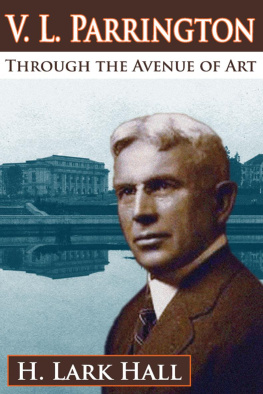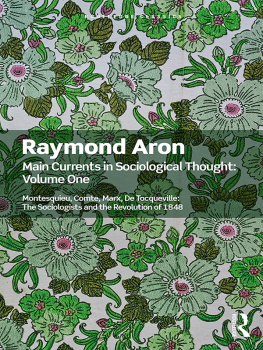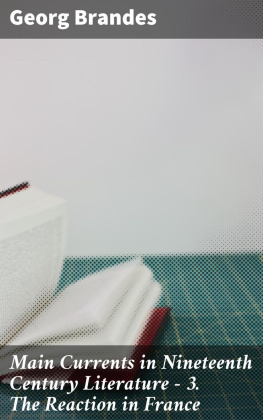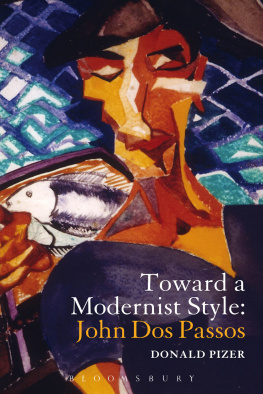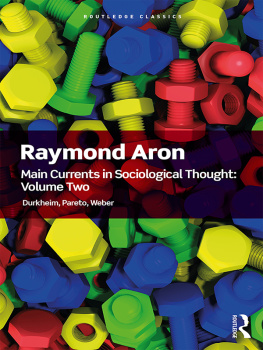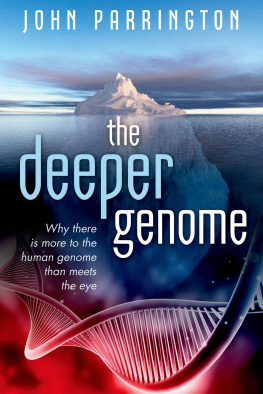V. L. PARRINGTON
Originally published in 1994 by The Kent State University Press
Published 2011 by Transaction Publishers
Published 2017 by Routledge
2 Park Square, Milton Park, Abingdon, Oxon OX14 4RN
711 Third Avenue, New York, NY 10017, USA
Routledge is an imprint of the Taylor & Francis Group, an informa business
Copyright 1994 by The Kent State University Press
All rights reserved. No part of this book may be reprinted or reproduced or utilised in any form or by any electronic, mechanical, or other means, now known or hereafter invented, including photocopying and recording, or in any information storage or retrieval system, without permission in writing from the publishers.
Notice:
Product or corporate names may be trademarks or registered trademarks, and are used only for identification and explanation without intent to infringe.
Library of Congress Catalog Number: 2010052457
Library of Congress Cataloging-in-Publication Data
Hall, H. Lark, 1949-
V. L. Parrington : through the avenue of art / H. Lark Hall.
p. cm.
ISBN 978-1-4128-4218-1 (acid-free paper)
1. Parrington, Vernon Louis, 1871-1929. 2. American literatureHistory and criticismTheory, etc. 3. English literatureHistory and criticismTheory, etc. 4. United StatesIntellectual lifeHistoriography. 5. Great BritainIntellectual lifeHistoriography. 6. Literary historiansUnited StatesBiography. 7. College teachersUnited StatesBiography. I. Title. II. Title: Vernon Louis Parrington.
PS29.P3H24 2011
810.9dc22
2010052457
ISBN 13: 978-1-4128-4218-1 (pbk)
It is with a certain feeling of temerity that I offer the present study of a field of American letters which has been pretty largely neglected, wrote Vernon Louis Parrington on the opening page of Main Currents in American Thought: An Interpretation of American Literature from the Beginnings to 1920. It is with a certain feeling of historical justice that I now offer, nearly three-quarters of a century after his death, this first full study of Parringtons life.
Parrington, born in Illinois in 1871 and dying in England in 1929, was a man in search of a personal myth. Successively he found his self-image mirrored in Victorian novels, painting, poetry, Populism, religion, the arts and crafts movement, American literature, and American history. Through it all ran the thread of teachingat the College of Emporia, the University of Oklahoma, and the University of Washington. His only major books appeared at the end of his life, the three volumes of Main Currents in American Thought: The Colonial Mind, 16201800, and The Romantic Revolution in America, 18001860, in 1927 and The Beginnings of Critical Realism in America, 18601920, in 1930, posthumously, in fragmentary form. Main Currents, a rebellious work for a rebellious generation searching for intellectual moorings in a time of political and economic upheaval, was received with near acclaim.
For the next few decades, it was one of the most influential and highly regarded texts in literature, history, and American Studies. But in each of these fieldswith the entrenchment of the New Criticism in the 1940s, the rise of consensus history in the 1950s, and the incorporation of social scientific perspectives in the 1960s, respectivelyMain Currents began to appear as a noble ruin, its pioneering role discredited and its author pretty largely neglected. Yet in the 1980s trends in both historical and literary studies helped prepare the way for a fresh look at Parrington and his work: the rapprochement between social history and intellectual history, a self-consciousness of methodology particularly as reflected in efforts to reconstruct the American literary canon, a multidisciplinary interest in critical theory, and the revival of interest in historicism among literary scholars. One can argue that Main Currents is the culmination of Parringtons search for a personal myth. If so, a reconsideration of the man will entail a rereading of the text.
I believe that Parrington was a more complex person than we have realized and that his complexities affected the genesis, design, and composition of Main Currents. Although his most sympathetic treatments have come from those critics who have considered him as a historian of ideas, none have considered him as an intellectual himself or as a member of the group of intellectuals who came to maturity at the turn of the century and sought to forge a synthesis between culture and politics. This context not only illuminates Parringtons personality; it highlights what I think is the fundamental concern in Main Currents: the drama of the life of the mind. Concern with the conditions and prospects of intellectual life in American culture gives a unity to the many biographical portraits in Main Currents that is obscured by an explanation based primarily on the function of the liberal tradition in American politics.
The first nine chapters of this book are biographical; the last three chapters offer some directions for new interpretations of Main Currents. My intention is not to engage directly in the continuing controversy over the volumes merits; rather, it is to illumine Parringtons methods in writing them. My primary interest is in biography, not critical debate, although critical debate could scarcely be avoided in portraying a person who practiced it so assiduously.
Parringtons extant personal papersincluding correspondence, published and unpublished manuscripts, teaching materials, diaries, architectural drawings, and mementos ranging from photographs snapped on his Brownie camera to hunting rifleshave been privately held since his death and are now in the care of a grandson, Stevens Parrington Tucker, of Pacific Grove, California. The present status of the papers presents several obstacles to conventional documentation procedures. Since the papers are privately held, it is not possible for the reader to consult or to study the original sources, large blocks of which constitute my research materials. Further, if and when the papers or a portion of them are donated to an archive and/or published, very likely they will be organized differently from their current arrangement. Materials not subject to these problemssuch as readily available references and accessible archival sourcesare conventionally placed in endnotes. However, for Parringtons personal papers, sources difficult to locate, or other privately held materials, I have most often identified the source in the text. The Bibliography provides a checklist of Parringtons writings and should be consulted as an adjunct to the endnotes.
Most of Parringtons remaining effects tightly fill a four-drawer filing cabinet. These documents helped structure the framework and proportions of this biography as well as determined some of its research problems. Parrington saved almost all of his course work from his two years at Harvard, but with the exception of his brief Autobiographical Sketch, his papers include little information about his family or his own childhood and youth. He saved the typed manuscripts of the poems that occupied so much of his energy in his late twenties and early thirties, but the nearly completed manuscript of a novel, Stuart Forbes: Stoic, written primarily during his fourteen-month grand tour of England and France, in page after page of his tiny backhand script, remains in disarray.

